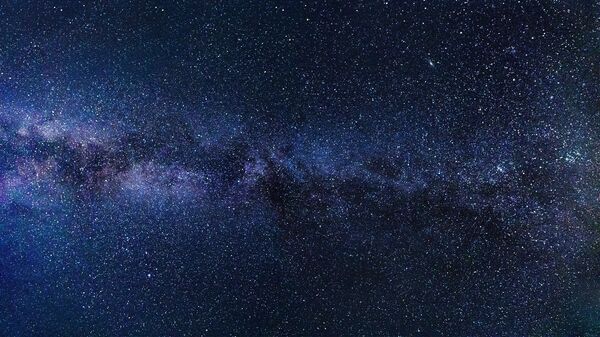The project tapped a variety of x-ray, optical and infrared images collected through the Chandra X-ray Observatory, the Hubble Space Telescope and the Spitzer Space Telescope, and saw agency scientists examine a 400-light-year span of the Milky Way’s Galactic Center.
The joint effort ultimately translated the collected data into sound in a move to offer a new take on the cosmos. Officials are offering users the options to either listen to the work as an ensemble or as solos.
A Tuesday release from NASA states that the sounds represent both the position and the brightness of a celestial object in an image, with sources seen at the top of the photo heard as higher pitches, while the volume rises with the intensity of the light being emitted.
The crescendo of the ensemble occurs when the marker reaches the bright, lower-right portion of the image, which depicts Sagittarius A* - a bright, complex radio source that is home to a supermassive black hole.
“Each image reveals different phenomena happening in this region about 26,000 light-years from Earth,” the release notes. “The Hubble image outlines energetic regions where stars are being born, while Spitzer's infrared image shows glowing clouds of dust containing complex structures.”
“X-rays from Chandra reveal gas heated to millions of degrees from stellar explosions and outflows from Sagittarius A*,” the release adds.
However, in addition to the focus on the Galactic Center, the project also provides viewers with the chance to listen to both the supernova remnant Cassiopeia A and the Pillars of Creation, an active star-forming section of the Eagle Nebula.
View this post on Instagram
The Chandra X-ray team noted in its description of the project that the sonification of Cassiopeia A is “mapped to four elements found in the debris from the exploded star as well as other high-energy data.” Similar to the process used for the ensemble, the intensity of the light sources is represented by the volume heard.
The same pitch-changing scheme as used for the Galactic Center was also replicated for the sonification of the Pillars of Creation; however, specific attention was given to the pillars, which are heard as “sweep from low to high pitches.”
The NASA project is part of ongoing work being carried out by the US space agency’s Universe of Learning program.

